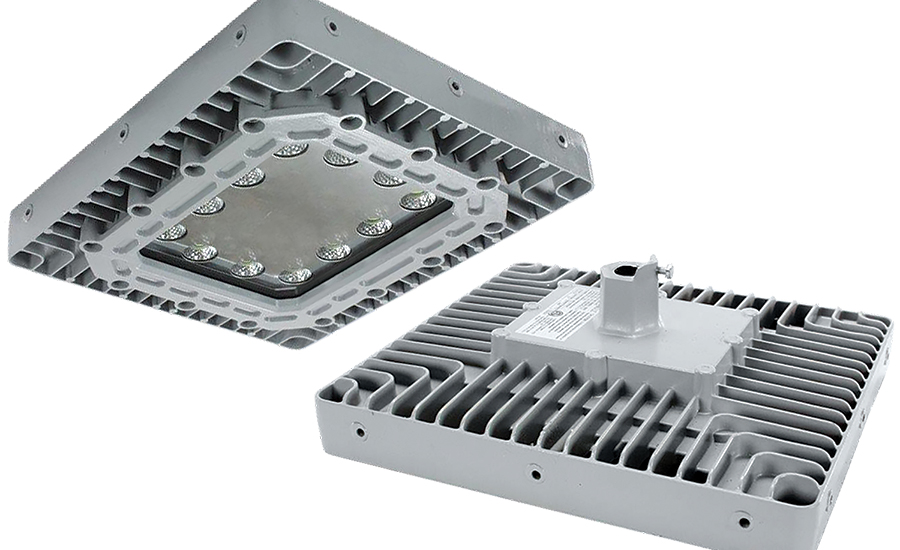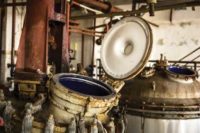Know your hazardous locations
Installing equipment in these atmospheres can be dangerous, even deadly

Sometimes electrical equipment must be installed in areas where combustible vapors and gases are used or may be present. These are commonly referred to as “hazardous locations,” and are defined by the National Electrical Code (NEC) in the U.S.
When equipment must be installed in these locations, there are strict requirements for the construction of the installation, including materials and design requirements. Electrical equipment intended for use in a factory or refinery is designed either to contain any explosion within the device or not to produce sparks with sufficient energy to trigger an explosion. We will break down the ratings so you can decide what equipment will be safe in your environment.
An area such as a home or office is classified as a Non Hazardous or Safe Area. The only release of an explosive would generally come from an aerosol can. A common flammable liquid would be paint thinner or brush cleaner. These offer a very low risk of causing an explosion, and are more likely to cause a fire. Non Hazardous areas in a factory or chemical plant are areas where it’s absolutely certain that the gases or vapors are “diluted” to a level below its flammability limit.
Classes of hazardous locations
Hazardous locations are broken into three “Classes.” Each class defines the type of substances that may be ignitable or explosive in the atmosphere. Class I areas have gases, vapors or liquids present. This includes acetylene, hydrogen, fuels and solvents. Class II areas have dust hazards. Class III covers fibers and shavings, types of combustibles that could be found in textile manufacturing or woodworking environments.
Each of the three classes listed above are further divided into two divisions. This is determined by the likelihood of the hazardous material being present in flammable concentrations. Division 1 is when ignitable concentrations of the hazards exist under normal operation conditions and/or where hazard is caused by frequent maintenance or repair work or frequent equipment failure. Division 2 is where ignitable hazards are handled, processed or used, but are normally in closed containers or closed systems from which they can only escape through accidental rupture or breakdown of such containers or systems. In other words, in a Division 2 environment, the hazards are “occasionally present.”
More specific characteristics
Class I and Class II Divisions are further subdivided into Groups A, B, C, and D. Group A is considered the most hazardous, with Group D being the least hazardous for gases and vapors. The explosive characteristics of the air mixtures of gases, vapors or dusts vary with the specific material involved. The Groups define substances by rating their flammable nature in relation to other known substances. Each material has been placed in a Group based on its ignition temperature and explosion pressure. Group A covers atmospheres containing acetylene. Group B is areas containing hydrogen or gases. Group C is defined as an atmosphere containing ethyl-ether vapors or ethylene. Finally, Group D defines areas containing gasoline, hexane, benzene, butane, propane, alcohol, acetone, lacquer solvent vapors, or natural gas (methane).
So now that we have listed the Classes, Divisions and Groups, we can explain the areas in a little more detail. A Class I, Division 1 area can be applied to three different situations:
1. When the atmosphere of an area or location is expected to contain explosive mixtures of gases, vapors or liquids during normal working operations. (This is the most common Class I, Div. 1.)
2. An area where ignitable concentrations frequently exist because of repair or maintenance operations.
3. The release of ignitable concentrations of gases or vapors due to equipment breakdown, while at the same time causing electrical equipment failure.
Next, one of the following scenarios must exist in order for an area to be considered a Class I, Division 2 location.
1. Areas where flammable liquids and gases are handled, but not expected to be in explosive concentrations. However, there could be a level of concentration should an accidental rupture or other unexpected incident.
2. An area where ignitable gases or vapors are normally prevented from accumulating by positive mechanical ventilation yet could exist in ignitable quantities if there was a failure in the ventilation.
3. Areas next to a Class I, Division 1 location where it is possible for ignitable concentrations of gas/vapors to come into this area because there isn’t proper ventilation.
Conditions define level of risk
If the following conditions exist, an area will be defined as a Class II, Division 1 location:
1. Where combustible dust is present in the air under normal operating conditions in such a quantity as to produce explosive or ignitable mixtures. This could be on a continuous, intermittent or periodic basis.
2. Where an ignitable and/or explosive mixture could be produced if a mechanical failure or abnormal machinery operation occurs.
3. Where electrically conductive dusts in hazardous concentrations are present.
Class II, Division 2 locations exist due to one of the following conditions:
1. Combustible dust is present but not usually in the air in concentrations high enough to be explosive or ignitable.
2. If the dust became suspended in the air due to an equipment malfunction and when the dust accumulations may become ignitable by abnormal operation or failure of electronic equipment.
Class III ratings are the least stringent in the system.
1. Class III, Division 1: This defined as a location or area where easily ignitable fibers or items that produce ignitable flyings are handled, manufactured or used in some kind of a process.
3. Class III, Division 2: A location or area where easily ignitable fibers are stored or handled.
The NECs ratings are very specific and detailed. Yet, not following these guidelines could be costly, or even deadly. Researching your equipment, application, location and hazards that are present is essential to providing a safer environment for all involved.
Looking for a reprint of this article?
From high-res PDFs to custom plaques, order your copy today!






